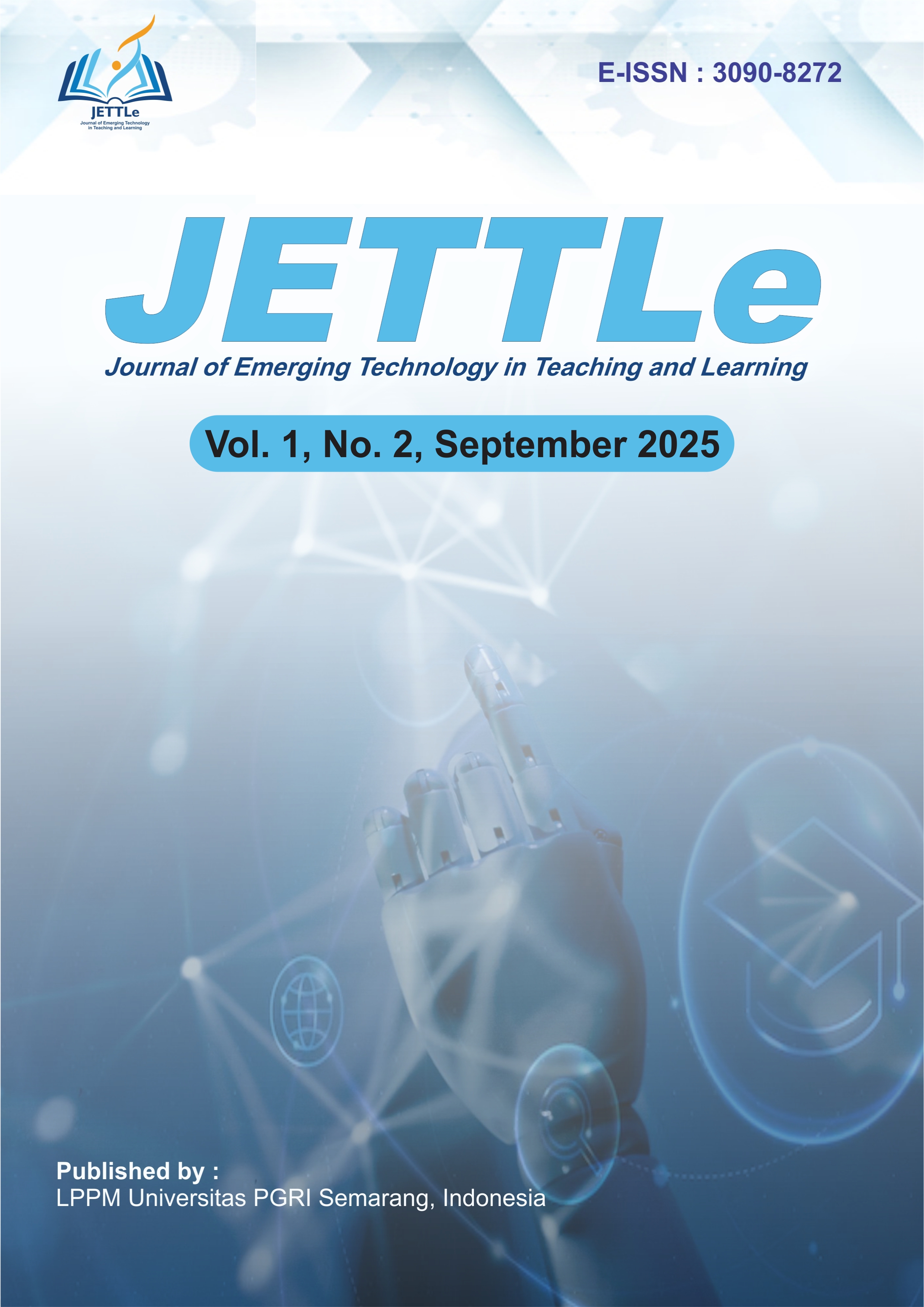The Effectiveness of Youtube as a Digital Learning Medium in Improving Listening Comprehension of Eleventh Grade Students
DOI:
https://doi.org/10.26877/jettle.v1i2.2795Keywords:
YouTube utilization, EFL instruction, listening proficiency, rural education, digital teaching, learner motivationlistening proficiency, rural education, learner motivationAbstract
This study investigates the effectiveness of YouTube as a digital medium for improving listening comprehension among eleventh-grade students at MAS Miftahussalam Simeulue Timur, a rural Islamic senior high school. Employing a quasi-experimental design, the research involved 60 students divided into an experimental group, which received YouTube-based instruction, and a control group, which relied on textbook materials. Pre-test results showed comparable proficiency between the two groups. After a four-week intervention, the experimental group achieved a mean score of 78.90 (SD = 6.85), reflecting a significant gain of 16.50 points, while the control group improved moderately to 68.23 (SD = 7.01), with a gain of only 6.36 points. Statistical analysis, including paired and independent sample t-tests, confirmed that the experimental group’s progress was significantly greater (p < 0.001). Classroom observations further supported these findings, showing that YouTube fostered higher engagement, motivation, and confidence. Features such as subtitles, playback control, and authentic input enabled learners to interact more effectively with English. The study concludes that YouTube is a highly effective and low-cost tool for enhancing listening comprehension, even in resource-limited contexts. It highlights the potential of digital platforms to bridge educational disparities in rural schools while offering practical implications for teachers, curriculum designers, and policymakers.
References
[1] Pratama SHH, Arifin RA, Widianingsih AWS. The use of Youtube as a learning tool in teaching listening skill. International Journal of Global Operations Research 2020;1:123–9.
[2] Alqahtani ET. Effectiveness of using YouTube on enhancing EFL students’ listening comprehension skills. Saudi Arabia 2014.
[3] Sembiring HTR, Katemba CV. The use of YouTube English educational videos in improving listening comprehension. Journey: Journal of English Language and Pedagogy 2023;6:161–70.
[4] Listiani NKM, Suwastini NKA, Dantes GR, Adnyani NLPS, Jayantin IGASR. YouTube as digital learning resources for teaching bilingual young learners. 2nd International Conference on Technology and Educational Science (ICTES 2020), Atlantis Press; 2021, p. 156–62.
[5] Tahmina T. Students Perception of the Use of Youtube in English Language Learning. Journal of Languages and Language Teaching 2023;11:151–9.
[6] Ratnaningsih L, Gumiandari S. The impact of TED Youtube channel to improve listening in English learning students of TBI IAIN Cirebon. International Journal of Educational Qualitative Quantitative Research 2022;1:8–15.
[7] Chien C, Huang Y, Huang P. YouTube Videos on EFL College Students’ Listening Comprehension. English Language Teaching 2020;13:96–103.
[8] Nasser Al Harbi W. The Role of Social Media (YouTube and Snapchat) in Enhancing Saudi EFL Learners’ Listening Comprehension Skills. Arab World English Journal (December 2020) 2020.
[9] Qomariyah SS, Permana D, Hidayatullah H. The effect of YouTube video on studentsâ€TM listening comprehension performance. Jo-ELT (Journal of English Language Teaching) Fakultas Pendidikan Bahasa & Seni Prodi Pendidikan Bahasa Inggris IKIP 2021;8:67–73.
[10] Yin RK. Qualitative research from start to finish. 2nd ed. London: Guilford publications; 2016.
[11] Creswell JW. Research design: Qualitative, quantitative, and mixed methods approaches. 2nd ed. Los Angeles: Sage Publications, Inc.; 2009.
[12] Mayer RE. Incorporating motivation into multimedia learning. Learning and Instruction 2014;29:171–3.
[13] Utami TP. An Analysis of Teachers’ Strategies on English E-Learning Classes during Covid-19 Pandemic (A Qualitative Research at MTs Sudirman Getasan in the Academic Year 2019/2020). IAIN Salatiga, 2020.
[14] Krashen SD. The input hypothesis: Issues and implications. London: Longman; 1985.
[15] Kelsen B. Teaching EFL to the iGeneration: A survey of using YouTube as supplementary material with college EFL students in Taiwan. Computer-Assisted Language Learning Electronic Journal 2009;10:10–27.
[16] Gilakjani AP. The significance of pronunciation in English language teaching. English Language Teaching 2012;5.
Downloads
Published
Issue
Section
License
Copyright (c) 2025 Journal of Emerging Technology in Teaching and Learning (JETTLe)

This work is licensed under a Creative Commons Attribution-NonCommercial-ShareAlike 4.0 International License.



